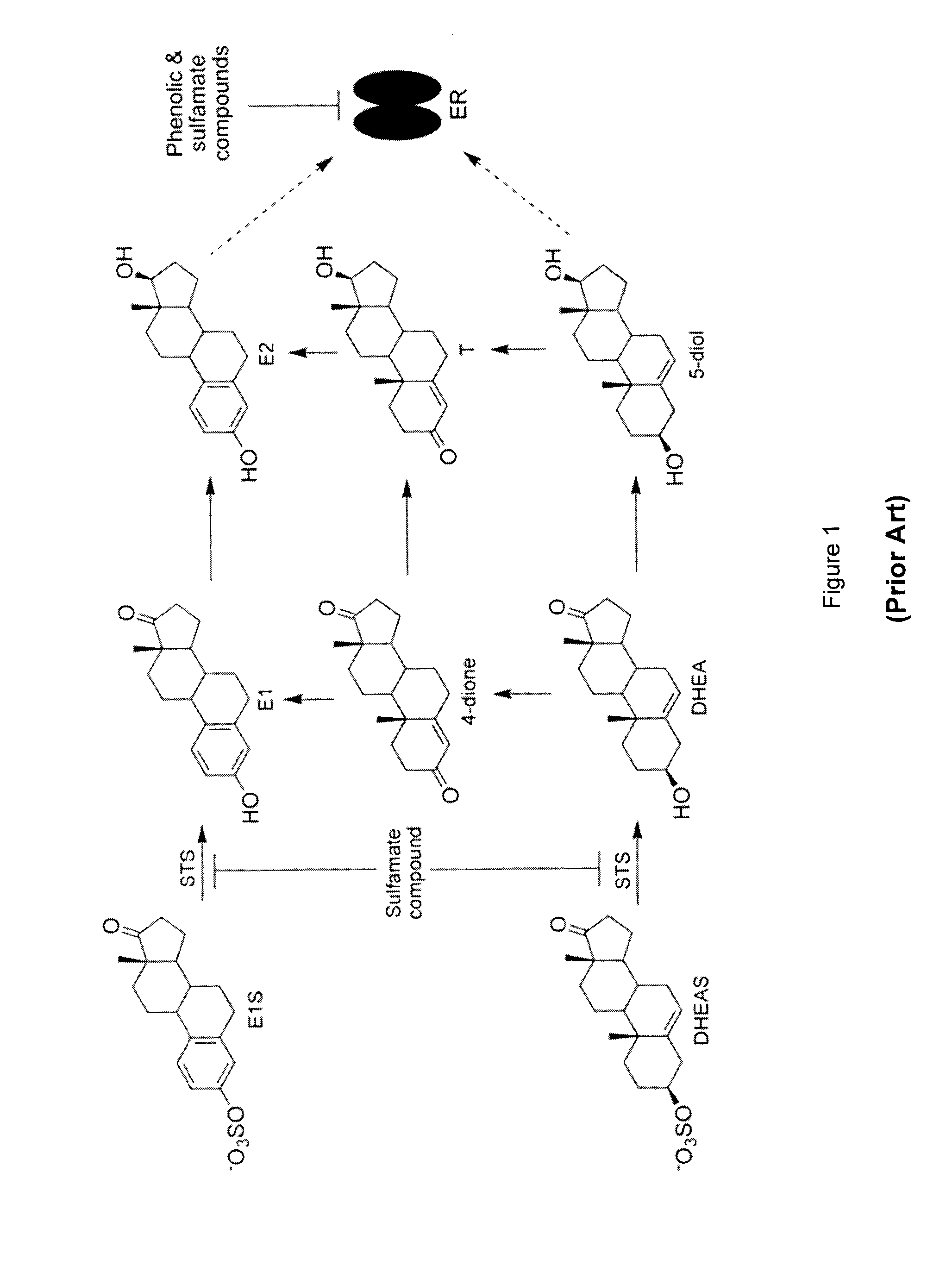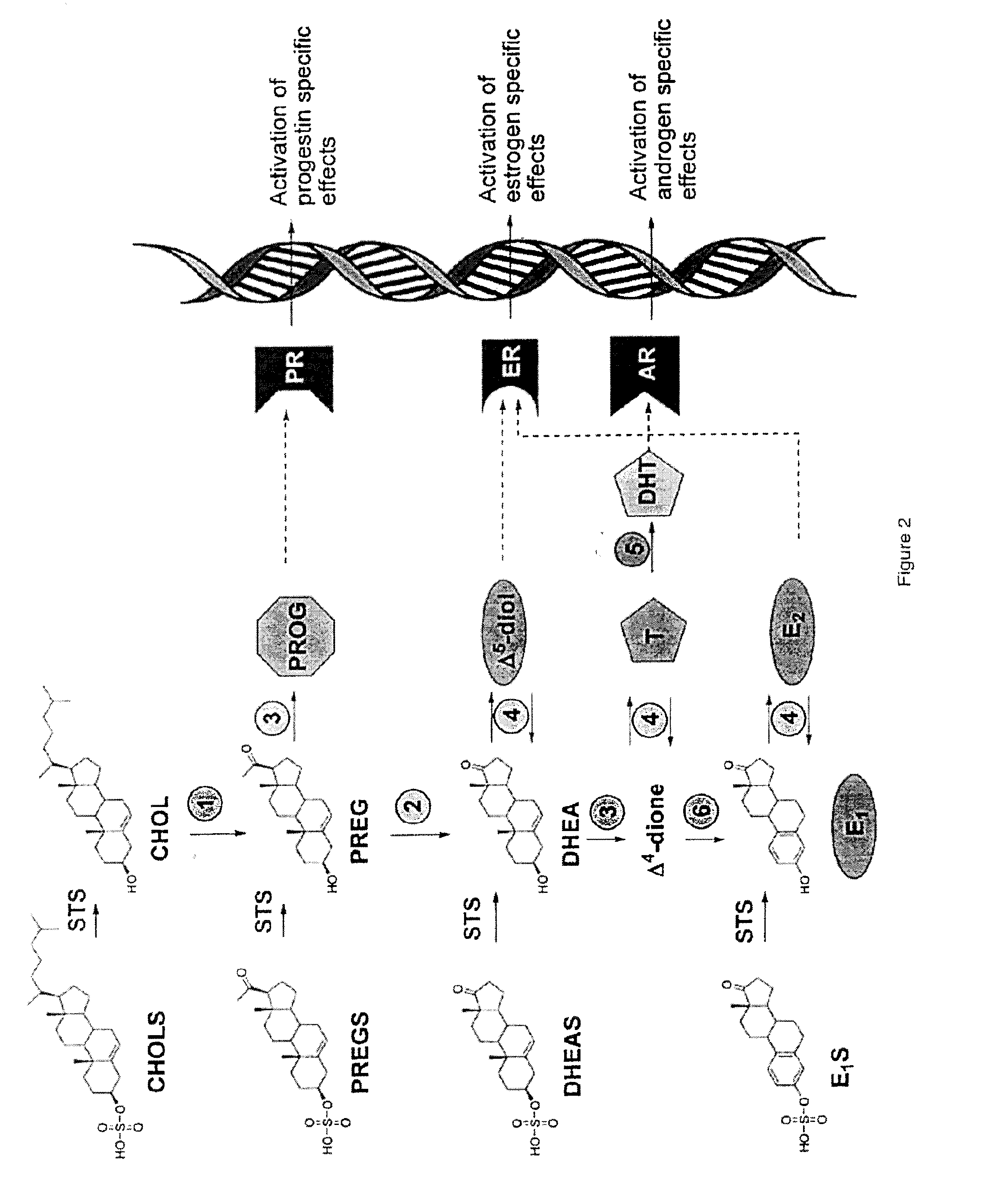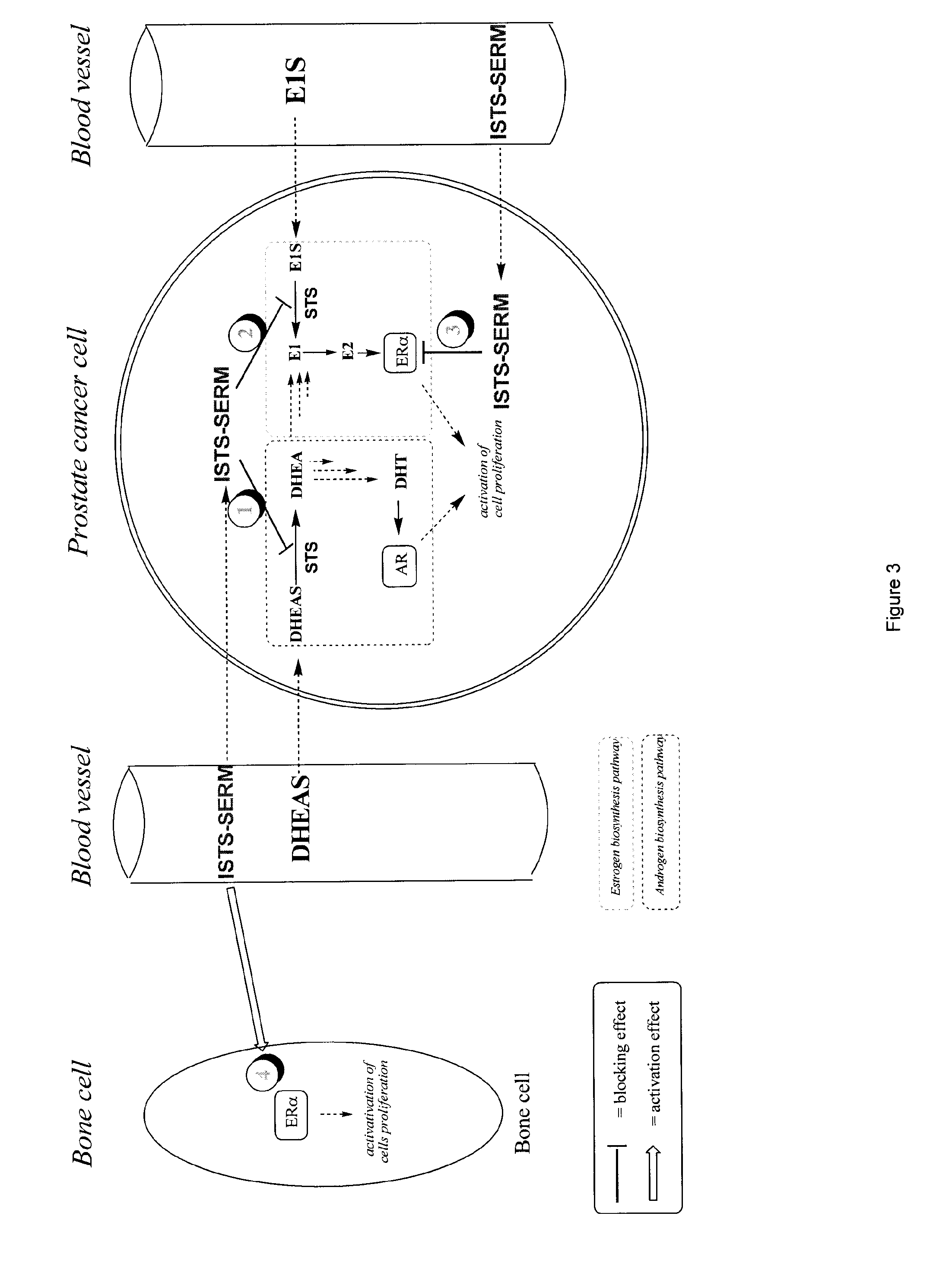Substituted 1,2,3,4-tetrahydroisoquinoline derivatives for the treatment of hormone-dependent diseases
a technology of isoquinoline and derivatives, which is applied in the field of substituted 1,2,3,4tetrahydroisoquinoline derivatives for the treatment of hormone-dependent diseases, can solve the problems of not being able to fully exploit this approach, provoking undesirable side effects, and affecting the effect of oestrogen depletion condition, etc., and achieves good antiestrogenic activity, induced cell proliferation of saos-2, and some cytotoxicity
- Summary
- Abstract
- Description
- Claims
- Application Information
AI Technical Summary
Benefits of technology
Problems solved by technology
Method used
Image
Examples
example 1
Chemical Synthesis of Secondary Amines as Building Blocks (Compounds 1a-b, 2a-b, 3c, 4c, 5-11)
[0112]The secondary amines 1a-b, 2a-b, 3c, 4c and 5-11 were synthesized by reacting the aldehydes 1-4 and appropriate amines a-c under classic conditions of reductive amination using molecular sieves in ethanol followed by the reduction of the intermediate imine with sodium borohydride. This is outlined in Scheme 1 below.62 The aldehydes 1 and 2 were beforehand synthesized by reacting 2- or 4-hydroxybenzaldehyde and 1-(3-chloropropyl)piperidine with sodium carbonate and sodium iodide in refluxing acetone.
example 2
Chemical Synthesis of Phenol Library (Compounds 19-31)
[0113]The general synthetic methodology for the preparation of all library members is outlined in Scheme 2 below. The starting compound 1,2,3,4-tetrahydroisoquinolin-7-ol (12) was selectively protected as the N-Fmoc derivative 13, which after a sulfamoylation of the phenol yielded the sulfamate 14. This sulfamate derivative was then reacted with the trityl chloride resin to give the solid-phase bounded compound 15. Removal of the Fmoc protecting group provided resin 16 with a free NH, which was acylated with carboxybenzaldehyde to give resin 17. The diversification of 17 was obtained by performing a reductive amination with various secondary amines that yielded resin 18. Finally, the phenol derivatives 19-31 were obtained by a nucleophilic cleavage from resin 18. The released compounds were found sufficiently pure to proceed to the estrogenicity test on T-47D (ER+) cells. The compounds that showed no trace of estrogenicity and to...
example 3
Chemical Synthesis of Sulfamates 32-34
[0114]The corresponding sulfamates 32-34 of phenols 25, 29 and 31 were synthesized using the same solid phase chemical synthesis route as for the phenol derivatives. In that case, however, an acid cleavage using HFIP was used at the end of the synthesis to release the sulfamate compounds 32-34. The compounds were then purified by flash chromatography.
Biological Assays
Initial Screening
[0115]The library of phenolic compounds described above was tested on estrogen-sensitive breast cancer T-47D cells. The results obtained are outlined in Table 1 below.
TABLE 1Proliferation of T-47D cells (%)IDR0.01 μM0.1 μM1 μM19102.8 ± 6.9 99.8 ± 4.2 37.1 ± 4.220105.9 ± 1.0104.5 ± 4.8 60.7 ± 6.421 96.8 ± 1.2105.9 ± 5.6 0 ± 9.122 95.6 ± 1.8119.7 ± 4.8133.7 ± 3.023102.8 ± 2.2112.9 ± 3.7 39.2 ± 2.924 94.9 ± 1.3 98.5 ± 4.5114.6 ± 5.925104.1 ± 2.3103.2 ± 2.5103.5 ± 6.526106.3 ± 0.6109.4 ± 1.2 59.2 ± 3.127108.2 ± 5.5105.9 ± 1.5118.8 ± 9.628100.6 ± 3.8105.4 ± 4.4 78.9 ± ...
PUM
| Property | Measurement | Unit |
|---|---|---|
| rotation | aaaaa | aaaaa |
| chemical shifts | aaaaa | aaaaa |
| chemical shifts | aaaaa | aaaaa |
Abstract
Description
Claims
Application Information
 Login to View More
Login to View More - R&D
- Intellectual Property
- Life Sciences
- Materials
- Tech Scout
- Unparalleled Data Quality
- Higher Quality Content
- 60% Fewer Hallucinations
Browse by: Latest US Patents, China's latest patents, Technical Efficacy Thesaurus, Application Domain, Technology Topic, Popular Technical Reports.
© 2025 PatSnap. All rights reserved.Legal|Privacy policy|Modern Slavery Act Transparency Statement|Sitemap|About US| Contact US: help@patsnap.com



